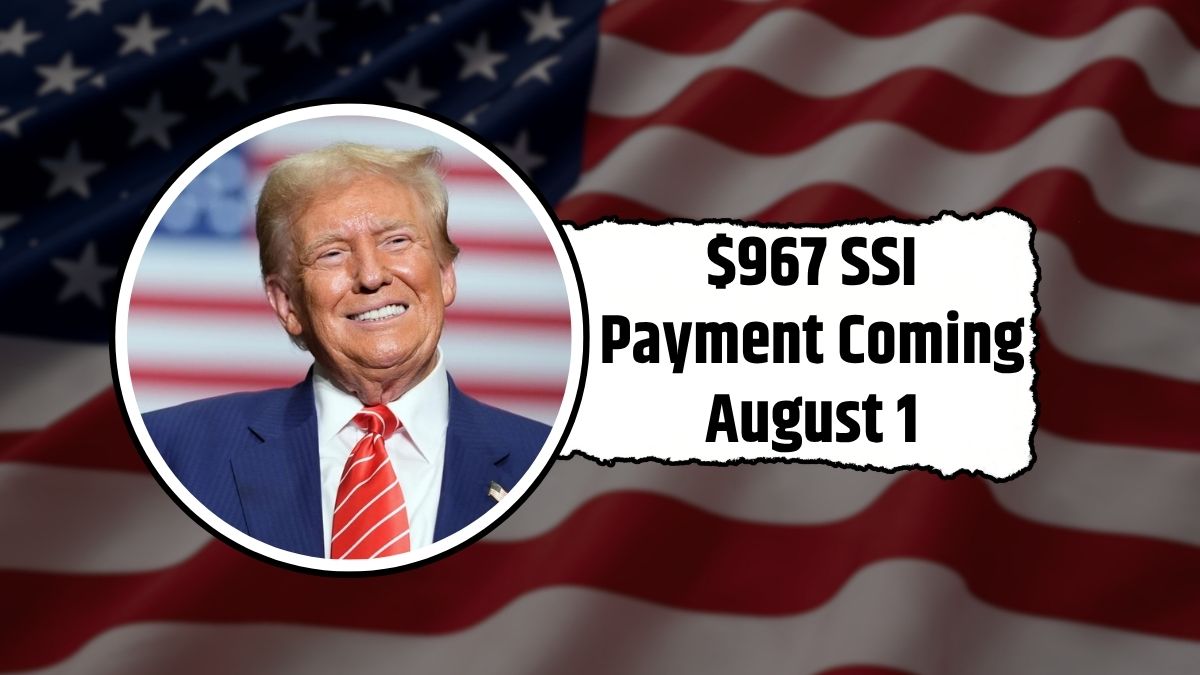If you’re struggling to keep up with the cost of living, Supplemental Security Income (SSI) might be the financial lifeline you didn’t know you were eligible for.
With inflation driving up prices on everything from groceries to rent, millions of low-income Americans—especially seniors and those with disabilities—are due to receive up to $967 on August 1, 2025, through the SSI program.
This monthly benefit, managed by the Social Security Administration (SSA), provides cash assistance to those with little to no income. And thanks to a recent increase tied to inflation, the August payment comes with a boost.
Key August SSI Details (Benefit Snapshot)
| Category | Details |
|---|---|
| Payment Date | August 1, 2025 |
| Program Administered By | Social Security Administration (SSA) |
| Max Monthly Benefit | $967 for individuals, $1,450 for couples |
| Eligibility | Seniors (65+), blind, disabled, low-income |
| Recent Increase | 2.5% COLA to offset inflation |
| Residency Requirement | Must reside in the U.S. or its territories |
What Is SSI and Who Oversees It?
The Supplemental Security Income (SSI) program is a federal initiative administered by the SSA. It provides monthly payments to qualified individuals with limited income and resources, including:
- People 65 years or older
- Individuals who are blind
- Persons with disabilities that prevent them from working
The primary objective of SSI is to help cover essential needs such as food, clothing, and housing. Benefits are typically paid at the start of each month, with the next installment set to be issued on August 1, 2025.
August SSI Payment Includes Cost-of-Living Boost
Earlier in 2025, the SSA approved a 2.5% Cost-of-Living Adjustment (COLA) for all SSI recipients. This decision was made in response to the rising Consumer Price Index (CPI), which measures inflation and the overall cost of living.
Thanks to this increase, eligible individuals will now receive higher monthly benefits to better cope with economic pressures.
Who Is Eligible for SSI? [Eligibility Requirements for 2025]
To qualify for SSI, applicants must meet strict financial and personal criteria. Here’s who qualifies:
Basic Eligibility Criteria:
- Must be age 65 or older
- Or, must be blind, regardless of age
- Or, must be disabled and unable to engage in substantial work activity
Additional Requirements:
- Be a U.S. citizen or fall under an approved immigration category
- Reside in the U.S., Washington D.C., or the Northern Mariana Islands
- Not leave the country for more than 30 consecutive days
- Possess limited income and assets
- $2,000 or less for individuals
- $3,000 or less for couples
If you already receive SSI and still meet these criteria, you’re automatically eligible for the August 1, 2025 payment.
How Much Can You Receive in August 2025?
The exact amount each person receives will depend on several personal factors, including income, household setup, and whether you qualify as an individual or part of an eligible couple.
2025 SSI Payment Breakdown:
| Recipient Category | Maximum Monthly Payment |
|---|---|
| Individual | $967 |
| Eligible Couple | $1,450 |
| Caregiver (on recipient’s behalf) | $484 |
Important: Not every recipient qualifies for the full amount. If you live with others who contribute to your expenses or if you earn some income, your SSI benefit may be reduced.
Citizenship and Residency Rules Still Apply
To remain eligible for SSI, beneficiaries must continue meeting the residency and citizenship criteria:
- Must reside in the United States or one of its territories
- Cannot stay outside the U.S. for more than 30 days without notifying the SSA
Those who fail to meet these terms may face benefit interruptions or delays.
You Don’t Have to Be Retired to Get SSI
One of the biggest misconceptions about SSI is that it’s only for retirees. This is not true.
SSI is not tied to retirement or work history. Instead, it is based purely on need, making it accessible even to younger individuals who are blind or disabled.
Working While on SSI: What to Know
Yes, you can still work and receive SSI—but there’s a catch.
If you have earned income, your SSI benefit amount may be adjusted based on your earnings. The SSA uses a formula to calculate how much your income will reduce your benefit. However, not all earnings count, and some exemptions may apply.
It’s important to report your income accurately to avoid any penalties or overpayments.
When to Expect Your SSI Check
SSI checks are typically issued on the 1st of every month. If that date happens to fall on a weekend or federal holiday, then the payment will be sent on the preceding business day.
Since August 1, 2025, falls on a Friday, payments will be made on that day as scheduled.
How to Track Your SSI Payment [Check Your Payment Online]
To check whether your payment is arriving and how much you’ll receive:
- Visit the official SSA website at ssa.gov
- Sign into your My Social Security account
- Navigate to SSI Payment Information
Avoid social media rumors and unofficial pages. The SSA’s online platform is the most reliable source for checking payment status, viewing the full benefit schedule, and even starting your application if you’re a first-time applicant.
Common Questions Answered
Q1: Do you have to be retired to get SSI?
No. Retirement is not required. SSI eligibility is based on age, disability, and income status.
Q2: Can you work and still get SSI?
Yes. You can have a job while on SSI, but your monthly benefit may be reduced depending on how much you earn.
Q3: Does everyone receive the full $967?
Not necessarily. The final amount depends on your income, assets, and living situation.








